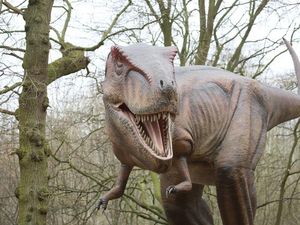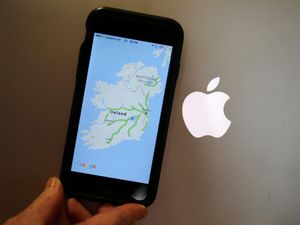Volcanic activity did not kill off dinosaurs, scientists say
Researchers believe it helped shape life on Earth after the mass extinction event 66 million years ago.

Volcanic activity did not kill off dinosaurs, scientists have said, based on an analysis of marine fossils.
Instead, they believe these massive eruptions may have helped shaped life on Earth after a mass extinction event wiped out 75% of the planet’s species around 66 million years ago.
The new research, in which experts from the University College London (UCL) and University of Southampton were involved, attempts to address the ongoing debate as to whether the Cretaceous-Paleogene (K-Pg) extinction was caused by a series of volcanic eruptions, or an asteroid collision, or both.
Geological records indicate that the environmental impacts from the massive volcanic eruptions in India, which caused a huge rock formation known as the Deccan Traps, happened 200,000 years before the K-Pg event.
According to the scientists, this indicates volcanic activity did not directly contribute to the death of dinosaurs.
Instead, they are standing by the original argument that the K-Pg event was caused by a 10km-long asteroid that crashed on the Yucatan Peninsula in Mexico, which resulted in the 200km-wide Chicxulub impact crater.

Professor Paul Bown, of the UCL Earth Sciences and study co-author, said: “Most scientists acknowledge that the last, and best-known, mass extinction event occurred after a large asteroid slammed into Earth 66 million years ago, but some researchers suggested volcanic activity might have played a big role too and we’ve shown that is not the case.”
The researchers examined tiny marine fossils to find out more about the ocean temperatures and carbon cycle changes at the time of the extinction.
These microscopic fossils, extracted from a seabed near Newfoundland in Canada, carry the geological record of the moment when dinosaurs went extinct, known as the K-Pg boundary.
The team then developed climate models showing the effects of carbon dioxide release from the volcanic eruptions.
Results showed volcanic gas emissions occurred 200,000 years before the K-Pg event.
Professor Paul Wilson, of the University of Southampton and one of the study authors, said: “By focusing on the effects of the gases that were released, rather than dating the rocks left behind by the Deccan eruptions, we found that volcanism began and ended distinctly prior to the mass extinction while the impact event coincides with the extinction.

“This means volcanoes are not a driver in the mass extinction event.”
Climate models indicated volcanic activity caused only a gradual global warming of about two degrees, which had no significant effect on marine ecosystems.
Donald Penman, a postdoctoral associate at Yale University and study co-author, said: “The K-Pg extinction was a mass extinction and this profoundly altered the global carbon cycle.
“Our results show that these changes would allow the ocean to absorb an enormous amount of CO2 on long time scales – perhaps hiding the warming effects of volcanism in the aftermath of the event.”
Researchers believe that volcanic gasses may have played an important role in shaping the rise of different species after the extinction.
Writing in the journal Science, the authors noted: “Deccan volcanism might have contributed to shaping [the rise of Cenozoic species and communities] during the extinction aftermath.”





